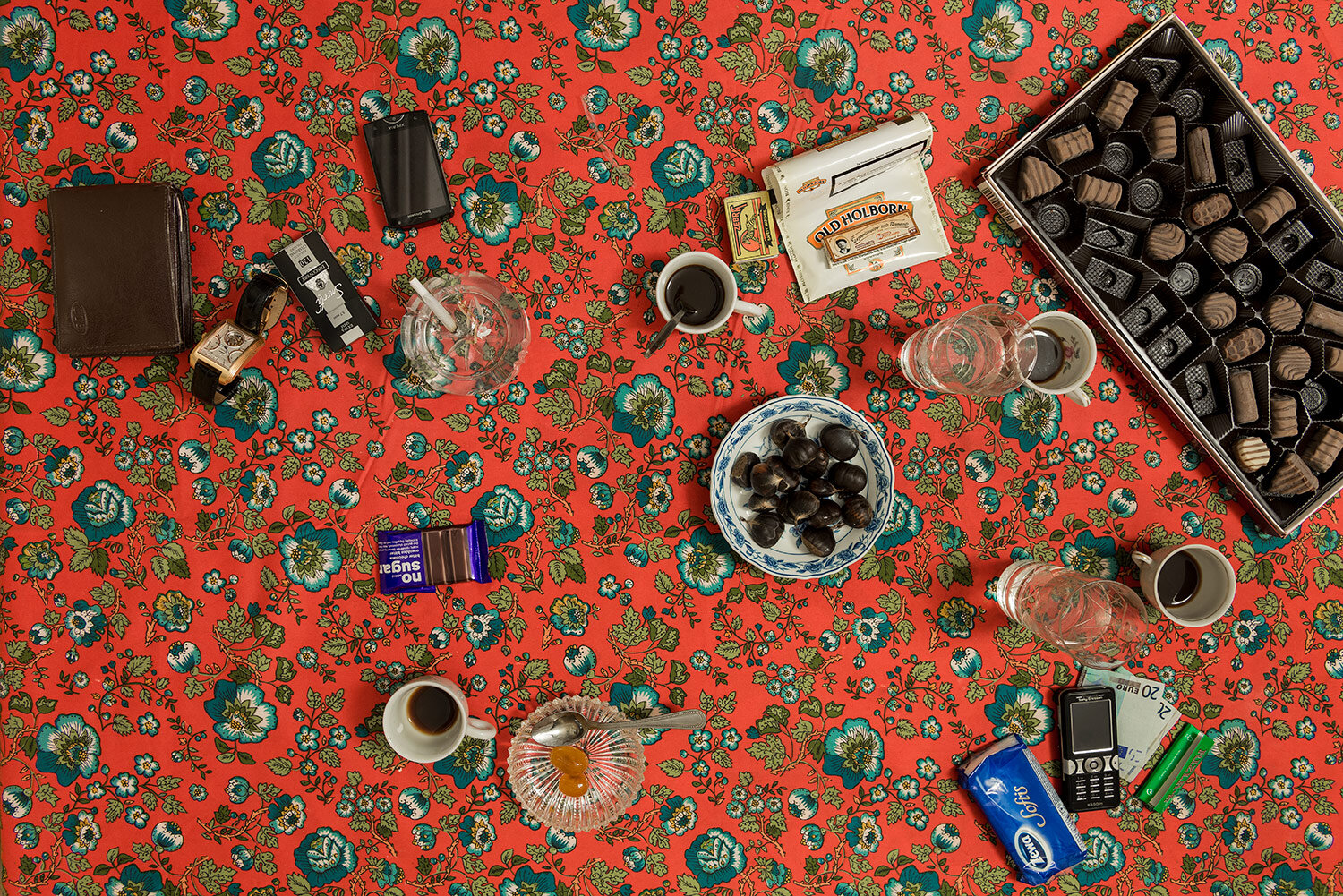Conversations
Food provides nourishment, supports social ritual, and expresses environment. A shared meal reveals tradition and offers opportunity for discourse. Breaking bread with fellow humans—a common fundamental act of required sustenance—helps barriers melt away, allowing deeper reflection and meaningful relations. Personal electronic devices have modified our communal experiences by assimilating onto familiar surfaces. As a direct tap into the always-connected ever-evolving world, they help expand our knowledge and facilitate daily life, while simultaneously shifting our awareness and enjoyment via spontaneous pursuits of pic curation and story-telling to preserve memories and post to social media—inevitably, their universal form and function have become ubiquitous.
Raised in a Greek household, my mother fervently emphasized family bonding during meals. Regardless of occasion, her homemade dishes and ritual dressing of classic dinner tables endearingly reflected dedication to sharing and togetherness. It was this invaluably precious foundation from which my culinary interests originated along with notions of hosting and paying homage to tradition. With this new facility we feel compelled to illuminate the world with perspectives and to mark experiences in place and time. Since that time, a new etiquette of exchange has emerged via smartphones, one of intermittent conversation comprising momentary disengagement into self-imposed bubbles of distraction. This modern paradigm has become customary and is particularly observed on time-honored surfaces where we traditionally break bread.
Evoking Dutch Golden Age still-life as inspiration, Conversations contemplates the eternal vs. the fleeting through technology’s implications on human interaction and its impact upon memory. As contemporary counterparts, these shared meals with friends and family throughout Europe and America celebrate intimacy and culture discovered at the table, while representing today’s frenetic, always-connected epoch of instant gratification. While we may relate to these tables as both hosts and participants, I’m intrigued by how our perceptions of networking impact our presence in social spaces. Among familiar shapes, patterns, colors, and textures in "Conversations," the presence of phones on tables, when noticed, provokes a curiously playful and contemplative validation of their inevitable assimilation into our frenzied lives.






























